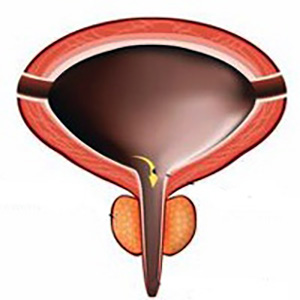Are voiding volumes and frequencies different in the three-day voiding diary in children with lower urinary tract dysfunction?

Accepted: September 2, 2023
All claims expressed in this article are solely those of the authors and do not necessarily represent those of their affiliated organizations, or those of the publisher, the editors and the reviewers. Any product that may be evaluated in this article or claim that may be made by its manufacturer is not guaranteed or endorsed by the publisher.
Authors
Aim: The voiding diary (VD) yields crucial insights into voiding volumes (VV), voiding frequency (VF), and management habits in children with lower urinary tract (LUT) dysfunction. It is recommended to be conducted for a minimum of 2 days. Nevertheless, certain studies have indicated similarities in voided volumes between days in a three-day VD. This study aims to compare VV and VF values across days based on bladder capacity and symptom scores. Materials and Methods: Children who applied to the pediatric urology clinic due to LUT symptoms between 2022 and 2023 were included in the study. Retrospective evaluation was conducted on the records. Children with neurological deficits and incomplete data were excluded from the study. All children were assessed following the guidelines of ICCS and EUA and underwent a 3-day voiding diary. Mean VV and VF values of the whole group for each day were compared and subgroup analyzes were performed in terms of gender, Voiding Dysfunction Symptom Score (VDSS), bladder capacity (BC), and diagnoses. Results: A total of 109 (53 girls (48.6%), 56 boys (51.4%)) children with a median age of 8 (3-17) were included in the study. 77 (70.6%) children were diagnosed with overactive bladder, 8 (7.4%) with dysfunctional voiding, and 24 (22%) with monosymptomatic enuresis nocturne. The mean VVs between days were similar in the whole group (p = 0.759). Moreover, the mean VV of the first day was similar to the average of both the first two days and the three days (p = 0.021, p = 0.490). Also, the maximum and minimum VVs were similar between days (p = 0.942, p = 0.160, respectively). In subgroup analyses based on gender, bladder capacity, and symptom score, mean VV was also found to be similar. VF values were found to be significantly different between days. There was also a difference between VF values in children with VDSS > 8.5 (p = 0.012) and BC/EBC (%) > 65 (p = 0.030). In subgroup analysis for diagnoses, mean and maximum VV and VF were similar between the groups, except for VF (p = 0.026) in OAB. Conclusion: While the voided volumes of children with non-neurogenic LUT dysfunctions appear to be consistent across the days of the VD, variations in VF might arise, especially among children with a VDSS of > 8.5 and normal bladder capacity. As a result, we believe that using a VD spanning at least two days could enhance diagnostic accuracy and help prevent unnecessary treatment.
How to Cite

This work is licensed under a Creative Commons Attribution-NonCommercial 4.0 International License.
PAGEPress has chosen to apply the Creative Commons Attribution NonCommercial 4.0 International License (CC BY-NC 4.0) to all manuscripts to be published.

 https://doi.org/10.4081/aiua.2023.11662
https://doi.org/10.4081/aiua.2023.11662



